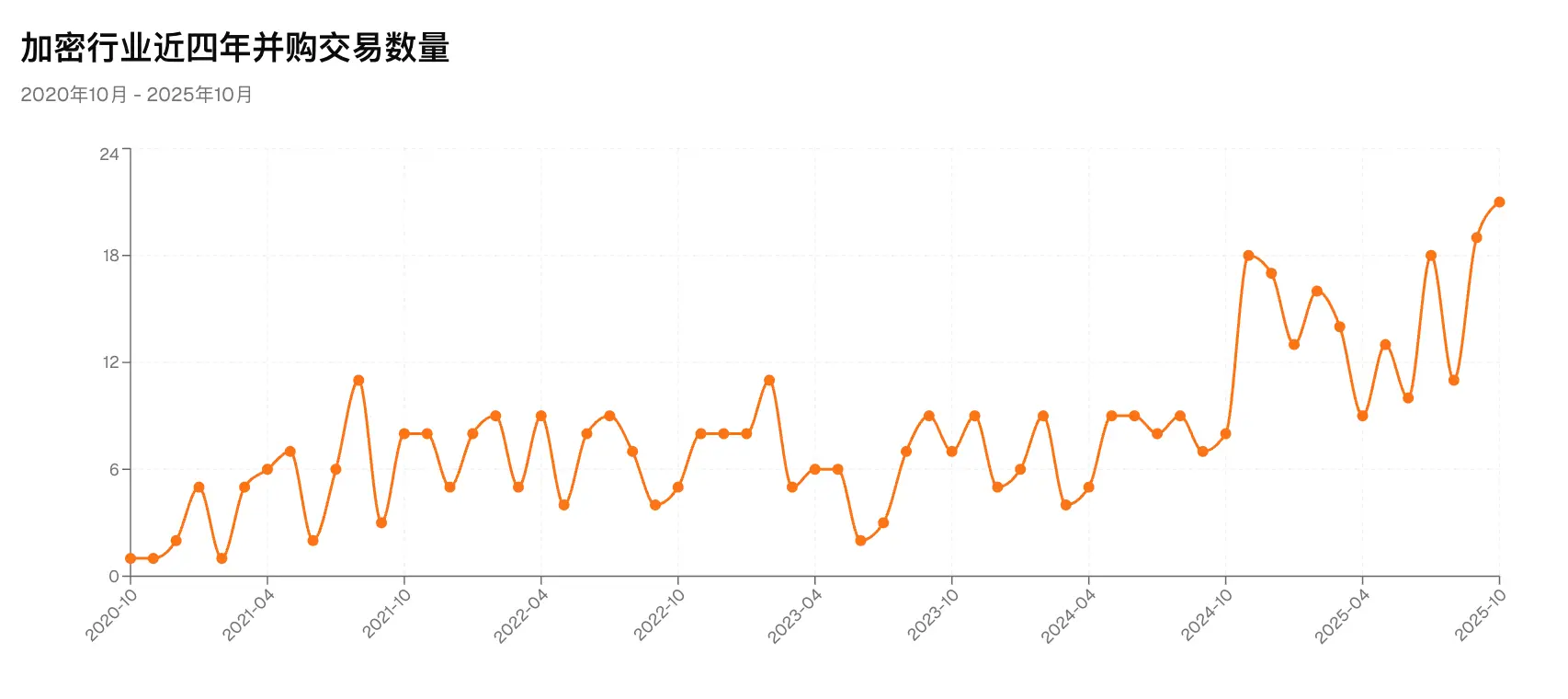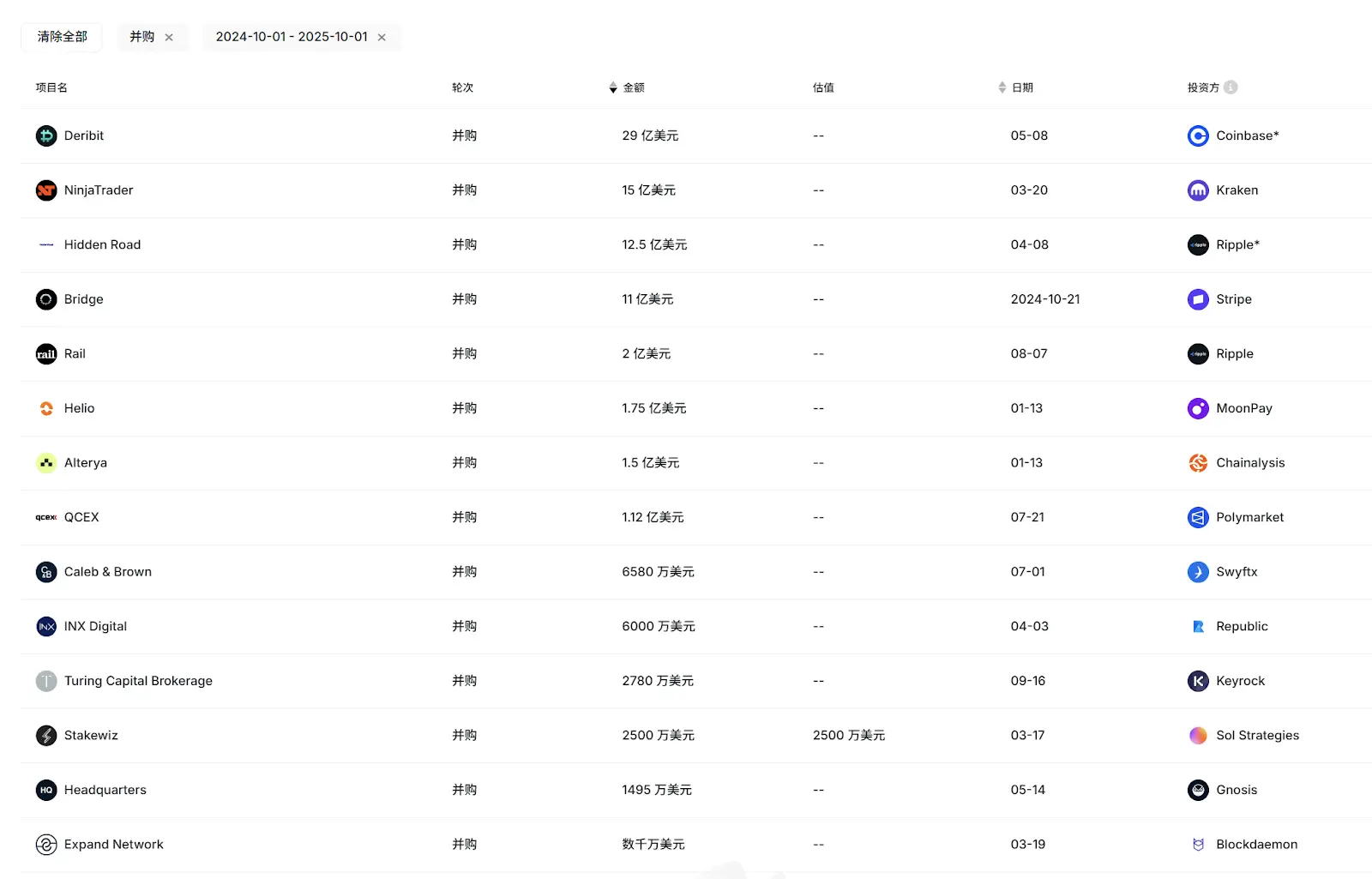The New Cycle and Old Rules of Crypto VC
As mergers and acquisitions and IPOs become mainstream exit strategies, and as LP types diversify and fund cycles lengthen, will crypto VCs—especially those in Asia—see a rebound at the bottom of the new cycle?
When mergers and acquisitions and IPOs become the mainstream exit paths, and as LP types diversify and fund cycles lengthen, will crypto VCs—especially Asian VCs—rebound from the bottom in the new cycle?
Written by: Gu Yu, ChainCatcher
An indisputable and obvious fact is that crypto VCs have been declining in recent market cycles, with almost all VC institutions experiencing reduced returns, influence, and discourse power to varying degrees. VC tokens are even "sneered at" by many investors.
There are many reasons that can be summarized. For example, since most VCs are accustomed to selling tokens and there are too many capital-driven projects, users have developed an aversion to VC tokens. More funds are flowing into narratives with lower VC involvement, such as meme and AI agents, resulting in a lack of liquidity for VC tokens. Additionally, the token unlocking cycles for VCs are getting longer, leading to slower and less favorable exits.
Several seasoned investors have also offered their explanations. Jocy Lin, founder of IOSG Ventures, believes that during the bull market cycle of 2021, primary market liquidity was extremely abundant, and VCs raised large amounts of funds in a short period. This capital surplus led to generally inflated project valuations and invisibly amplified the "narrative-driven" investment model. Many VCs are still stuck in the easy money mode of the previous two cycles, believing that products and tokens are unrelated. They chase grand narratives and potential tracks, while neglecting the project's true product-market fit (PMF) and sustainable revenue models.
Jocy Lin further explains: The fundamental dilemma of crypto VCs is the "mismatch between value capture ability and risk bearing." They bear the longest lock-up periods and highest risks, yet are in the weakest position in the ecosystem, squeezed by exchanges, market makers, and KOLs at every level. When the narrative-driven model collapses, native VCs lacking industry resources lose their foundation for existence—money is no longer a scarce resource; liquidity and certainty are.
Will, partner at Generative Ventures, believes that exchanges and market makers have become the real exploiters of all liquidity and premiums in this cycle. Most projects, after receiving VC money, essentially do two things: first, marketing and hype; second, paying listing fees to exchanges. These projects are essentially marketing companies that need to pay a lot to exchanges and market makers. Moreover, nowadays, most VC tokens are locked for 2-3 years after listing, which is even longer than in traditional securities markets, so their liquidity expectations for unlocking and exiting are very poor, making it hard to make money.
Anthony Zhu, founding partner of Enlight Capital, believes that Asian VCs focusing on token strategies have fallen into a death spiral in the current sluggish altcoin market. The rapid profit effect of the previous bull market created a strong path dependence at both the LP and GP levels. When this path is lengthened or even disappears, VCs are squeezed on both sides by short-term return expectations from LPs and projects deviating from fundamentals, ultimately leading to distorted actions. The current situation is essentially a mismatch of some LP-GP-market opportunities.
However, aside from the overall decline of VCs, a more noteworthy phenomenon and issue is that the overall activity and influence of Asian VC institutions seem to have declined even more significantly in this cycle. In RootData's 2025 Top 50 VCs list, based on activity and exit performance this month, only 2-3 Asian VCs, such as OKX Venture, made the list. In the recent IPO boom and major M&A exit cases (Circle, Gemini, Bridge, Deribit, etc.), only IDG Capital achieved significant returns through early investment in Circle, while other Asian VCs were basically absent.

Looking further, once very active and high-performing Asian VC institutions such as Foresight Ventures, SevenX Ventures, Fenbushi Capital, NGC Ventures, etc., have made fewer than 10 or even 5 investments this year, with little fundraising progress.
From once being influential to now falling into silence, why have Asian VCs ended up in such a predicament?
1. Why Can't Asian VCs Compete with European and American VCs?
Under the same macro environment, Asian VCs can't compete with European and American VCs. According to some interviewees, this is mainly due to factors such as fund structure, LP types, and internal ecosystems.
Jocy Lin, founder of IOSG Ventures, believes this is partly because Asia lacks a mature LP group. As a result, many Asian VC funds mainly raise money from high-net-worth individuals and entrepreneurs in traditional industries, as well as some idealistic OGs in the crypto industry. Compared to the US and the West, the lack of long-term institutional LPs and endowment funds means that Asian VCs, under LP exit pressure, are more inclined toward thematic speculative investments rather than systematic risk management and exit design. The life cycle of a single fund is relatively short, so they are under more pressure when the market contracts.
"In contrast, most European and American funds have cycles of more than 10 years, with more mature systems in fund governance, post-investment empowerment, and risk hedging, allowing them to maintain more stable performance during downturns." On X, Jocy Lin also called for exchanges to use their hundreds of millions of dollars in bailout funds to invest in VCs if they can't participate directly, so that VCs can play the role of capital feedback to entrepreneurs.
Jocy Lin also said that Western funds tend to follow a people-oriented value investment philosophy. In the crypto industry, founders who can operate projects long-term and maintain project fundamentals through cycles are extremely resilient entrepreneurs, and such founders are rare in the industry. Some Western investors have succeeded, but the "invest in people" model has a very limited success rate in the crypto industry.
Moreover, the way American funds push up project valuations has affected many participating Asian funds. Due to shorter fund cycles and the pursuit of short-term cash returns, Asian funds have also begun to diverge: some bet on higher-risk tracks such as gaming and social, while others aggressively enter the secondary market. However, both models struggle to achieve excess returns in the volatile altcoin market, and some even suffer serious losses. "Asian funds are very loyal and have strong faith, but the industry has relatively let them down this cycle," Jocy Lin lamented.
Anthony Zhu holds a similar view. He said that European and American funds are generally larger and have deeper pockets, so their investment strategies are more flexible and perform better in non-unilateral bull markets.
Another key factor is that European and American projects have more exit methods and opportunities, not just relying on exchange listings. In the recent M&A boom, the main acquirers were leading European and American crypto companies and financial institutions. Due to geographical, cultural, and other reasons, Asian crypto projects have not yet become high-priority targets for these acquirers. In addition, most current IPO projects are also of European and American origin.

Source: RootData
Because equity exit channels are more accessible, European and American VCs tend to have more diversified investment targets. Many Asian VCs, limited by team background, fund structure, and exit channels, usually avoid equity investments, thus missing out on many projects with returns of tenfold or even a hundredfold.
But Anthony also emphasizes that although Asian crypto VCs focusing on token investments have generally underperformed since the last cycle, some Asian USD VC institutions investing in equity projects have performed excellently. "Mainstream institutional VC investors are more patient, and their performance is only reflected over long cycles. Asia has some of the world's best crypto entrepreneurs working on innovative products, and more Asian projects will enter mainstream European and American exit channels in the future. Asia also needs more long-term capital to support outstanding early-stage projects."
Will offers another unconventional perspective. In his view, the reason for the poor performance of Asian VCs is that they are too close to Chinese exchanges—the closer they are, the worse it is, because they pin their exit hopes on exchange listings. But in this cycle, exchanges are the biggest exploiters of liquidity. "If these VCs had seen the situation clearly before, they should have bought exchange tokens like BNB, OKB, BGB, instead of investing in so many small projects that all rely on exchange listings, only to end up locked in."
2. VC and Industry Transformation
With crisis comes change, and a major reshuffle of the crypto VC landscape is inevitable. If 2016-2018 was the rise of the first generation of crypto VCs, and 2020-2021 was the rise of the second generation, then now may well usher in the third generation of crypto VC cycles.
In this cycle, in addition to the aforementioned renewed focus on USD equity investment, some VCs' strategies will pay more attention to the more liquid secondary market and related OTC fields. For example, LD Capital has completely shifted to the secondary market in the past year, heavily investing in tokens such as ETH and UNI, sparking much discussion and attention, and has become one of the most active players in the Asian secondary market.
Jocy Lin said that IOSG will not only place greater emphasis on primary market equity and protocol investments, but will also extend its basic research capabilities, considering some OTC or passive investment opportunities and structured products in the future to better balance risk and return.
However, IOSG will still remain active in the primary market. "In terms of investment preference, we will focus more on projects with real revenue, stable cash flow, and clear user demand, rather than relying solely on narrative-driven investments. We hope to invest in products and sustainable business models that have endogenous growth momentum even in the absence of macro liquidity," said Jocy Lin.
Speaking of cash flow and revenue, the most high-profile project this cycle is Hyperliquid, which, according to DeFillama data, generated over 100 million USD in revenue in the past 30 days. However, Hyperliquid has never received VC investment. This community-driven, VC-independent project development model has set a new path for many projects. So, will more and more quality projects follow Hyperliquid, further reducing the role of crypto VCs? In addition, with more KOL rounds and community rounds, to what extent will they replace the role of VCs?
Anthony believes that for some types of DeFi projects like Perp, due to small team sizes and strong profit effects, models similar to Hyperliquid may always exist, but this may not apply to other types of projects. In the long run, VCs are still an important force in promoting the large-scale development of the crypto industry and connecting institutional capital with early-stage projects.
"Hyperliquid's success is largely due to its product's self-circulating nature—as a perpetual contract protocol, it naturally has the ability to generate revenue and market-driven effects. But this does not mean the 'no VC' model can be universally replicated. For most projects, VCs are still a key source of product development funding, compliance advice, and long-term capital in the early stages," said Jocy Lin. In any traditional TMT sub-sector or industry, there is no track without VC and capital participation (AI or healthcare, etc.). An industry without VCs is definitely unhealthy. The moat of VCs has not disappeared; it has shifted from providing money to providing resources and patience.
Jocy Lin also shared a statistic: projects invested in by top VCs have a 3-year survival rate of 40%. Projects driven entirely by the community have a 3-year survival rate of less than 10%.
When discussing KOL rounds and community rounds, Jocy Lin believes their rise is indeed changing the structure of early-stage financing. They can help build consensus and community momentum in the early stages, especially in marketing and GTM, but their empowerment is mainly limited to narrative dissemination and short-term user mobilization, with limited support for long-term governance, compliance, product strategy, and institutional expansion.
Today, Asian crypto VCs are facing their lowest point in years. The rapid changes in internal and external ecosystems and narrative logic have led VCs down different paths. Some VC names have faded into history, some are still undecided, and some are making bold adjustments, exploring how to form healthier and more lasting relationships with projects.
However, the "bloodsucking" state of market makers and exchanges continues, and Binance Alpha's frequent listings have even exacerbated this state. How to break free from this negative ecological relationship and find breakthroughs in exit paths and investment strategies will remain one of the biggest challenges for the new generation of VC models.
Recently, crypto industry giants such as Coinbase have significantly accelerated the frequency of mergers and acquisitions. According to RootData statistics, the number of M&As in the first 10 months of this year has exceeded 130, with at least 7 crypto companies going public via IPO. The total fundraising by crypto-related listed companies (including DAT companies) has exceeded 16.4 billion USD, setting a new record. According to reliable sources, a well-known traditional Asian VC institution has established an independent fund mainly for equity investment, with a duration of about 10 years. More and more VCs will align with the "old rules" of the equity investment market.
This is probably one of the strongest signals the market is sending to VCs for the new cycle: there are still many opportunities in the crypto primary market, and the golden cycle of equity investment may have already arrived.
Disclaimer: The content of this article solely reflects the author's opinion and does not represent the platform in any capacity. This article is not intended to serve as a reference for making investment decisions.
You may also like
Gain Insight into Cryptocurrency’s Promising Future for 2026
In Brief The next major crypto bull cycle will start in early 2026. Institutional investors and regulation drive long-term market confidence. Short-term shifts show investors favoring stablecoins amid volatility.

Stunning $204 Million USDT Transfer Ignites Market Speculation

